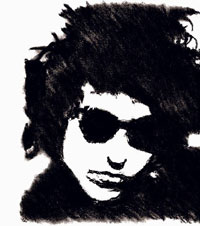Dylanologists gather in Bob Dylan's home to deconstruct the songwriter
They call themselves "Dylanologists," and in the words of one of their leaders, there is something wrong with you if you're not "intrigued, enthralled and obsessed" with Bob Dylan.

These scholars and writers, most with prestigious university posts, are more likely to compare the music legend to poet Walt Whitman than to Bruce Springsteen. On Tuesday, a whole crowd of them wrapped up a four-day symposium, billed as the largest ever of its kind, at the University of Minnesota in the state where Dylan was born.
"Dylan has entered my day job," said Richard Thomas, a professor of Greek and Latin at Harvard University who lectured on Dylan's similarity to ancient epic poets like Ovid and Virgil. "I've come to see him as someone as worthy as the great poets on whom I've been fortunate enough to work."
The symposium - titled "Highway 61 Revisited: Dylan's Road from Minnesota to the World" - drew about 250 participants from as far away as Italy and Japan. It coincided with a traveling exhibit on Dylan at the school's Weisman Art Museum.
Over the weekend, dozens of the participants boarded a bus and rode 220 miles (355 kilometers) north on a field trip to Dylan's hometown of Hibbing on Minnesota's Iron Range. They toured an iron mine and visited the high school auditorium where the young Bobby Zimmerman sang in a talent show (he supposedly was booed).
The other three days of the symposium were held in buildings just blocks from Minneapolis' Dinkytown, where Dylan got his start playing in folk clubs in the late '50s and early '60s. Eminent Dylanologists discoursed on all that followed in the ensuing five decades, with lectures and panel discussions on everything from Dylan's parallels to the pop artist Andy Warhol, to his influence on "International Social Movements of the Cold War."
"Dylan, he's just so vast," said Colleen Sheehy, the symposium organizer and a curator at the Weisman. "There's so many perspectives to take on him. There are so many points of entry to his work, and it leads you to so many aspects of American history and culture."
Dylan's lyrics have become popular texts in college-level poetry classes, said Kevin Dettmar, an English professor at Southern Illinois University in Carbondale.
"It's sort of the classic bait and switch," Dettmar said. "They try to reel in the students with Dylan and then sneak in some Keats."
Some people in academic circles are still skeptical about including Dylan in the canon, Dettmar said. "They wonder if he has lasting power, which I think is ridiculous."
Dettmar is the editor of the upcoming "Cambridge Companion to Bob Dylan," which will serve as an all-purpose academic resource for students of Dylan and place him alongside such past Cambridge subjects as William Shakespeare and James Joyce.
And what does the cryptic singer think of this kind of attention? Well, he once famously derided Dylanologists who "dissect my songs like rabbits."
But that is not likely to stop the dissecting. Take British literary critic Christopher Ricks, a 73-year-old professor of poetry at Oxford University who in 2003 published "Dylan's Visions of Sin," a 500-page examination of biblical themes in Dylan's music.
"I should think people need to explain themselves if they're not intrigued, enthralled and obsessed with Dylan," Hicks said during a lecture at the symposium. "Those of us who are, we don't have any explaining to do."
Subscribe to Pravda.Ru Telegram channel, Facebook, RSS!


